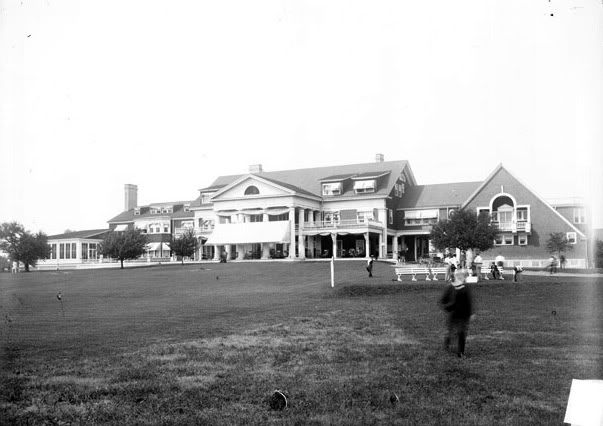Back Nine
#10 The Midway 386/437/433/429
The back nine starts with a straightforward medium long par 4 over with a small well protected green. Hole is notable for a series of "cottages" adjoining the hole on Cottage Row. The cottages designed by Howard van Doren Shaw were summer homes of the millionaires that founded the club including the home of Montgomery Ward's George Thorne which is on the National Registry of Historical Places.
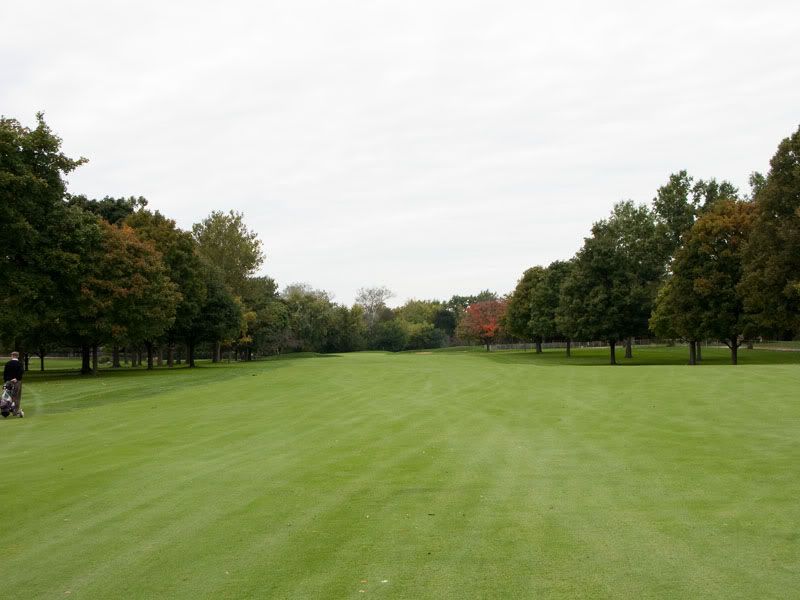
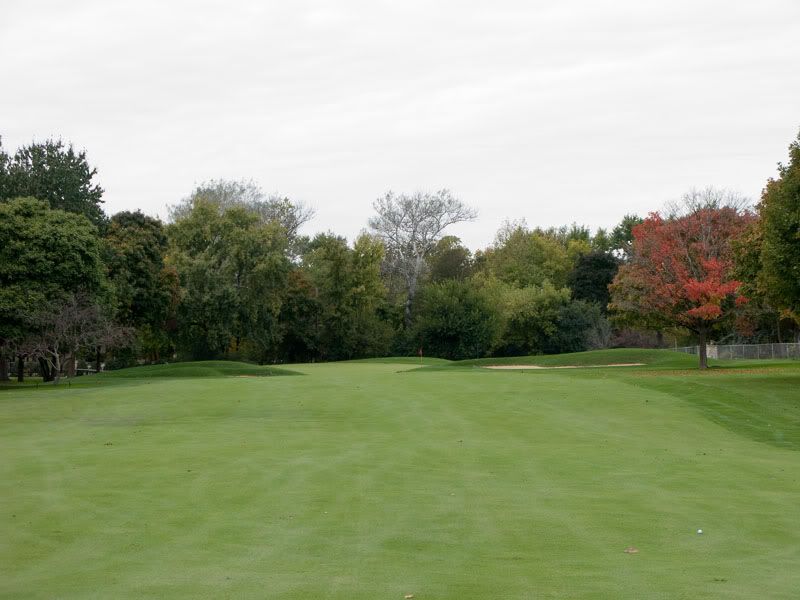

One of the Midlothian Cottages (not the Thorne House)
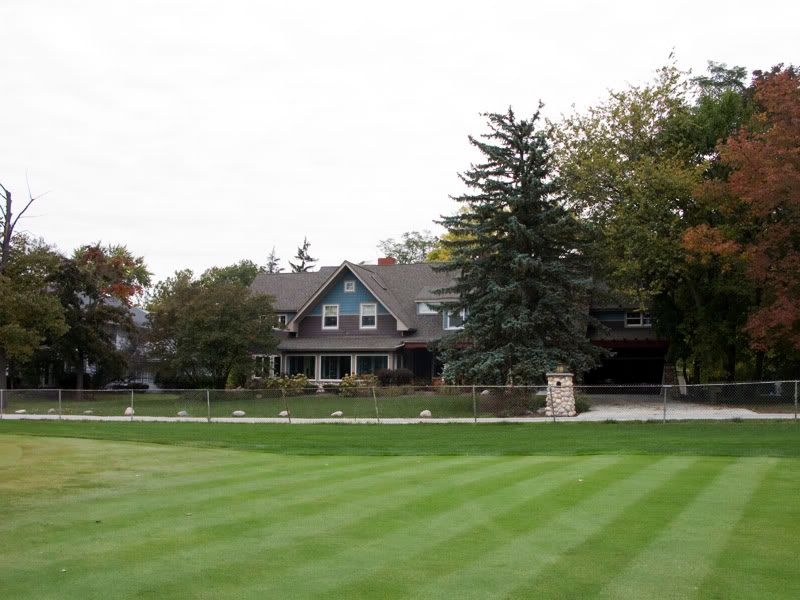
#11 Ben Neves 400/382/353/373
The 11th is named after Ben Nevis in Scotland the highest mountain in the UK . This was my favorite hole with a very nice raised green that no doubt gave the hole its name.
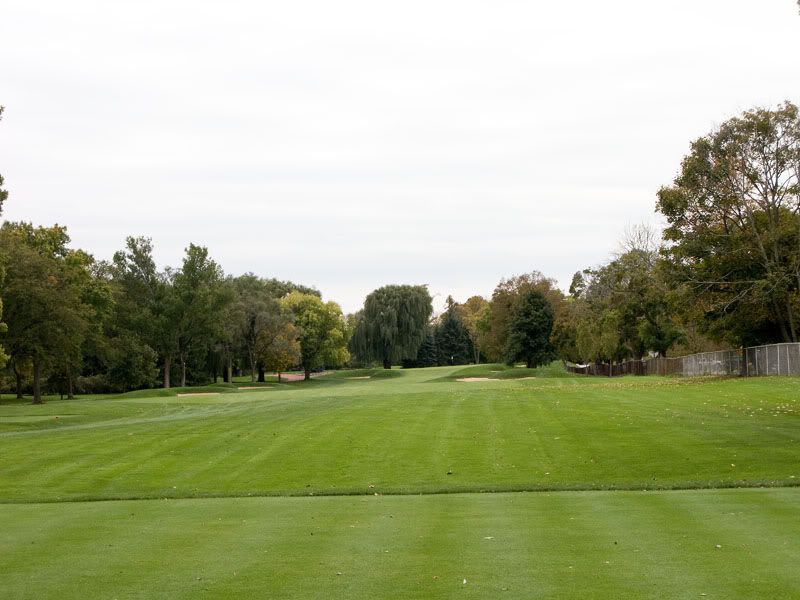
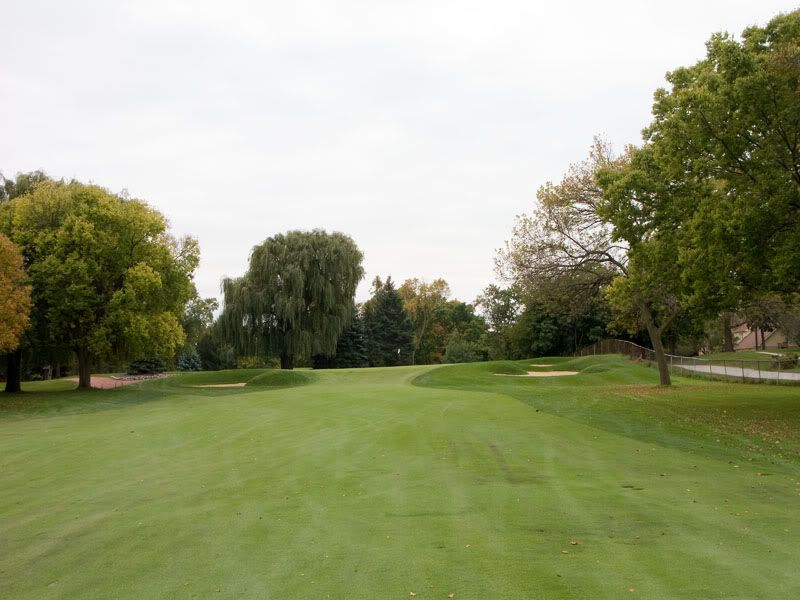
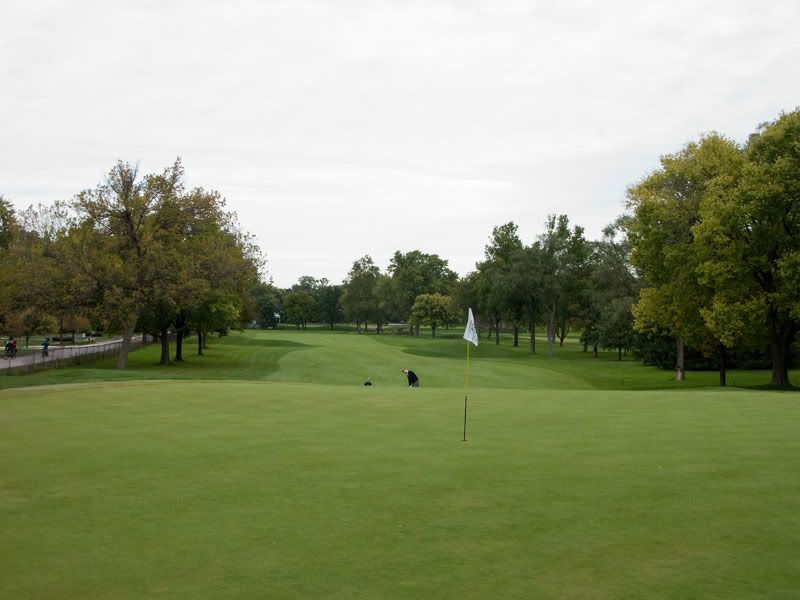
#12 Ben Lomond 105/122/139/170
Ben Lomond is named after another peak in Scotland that is visible from Ben Neves in the Glasgow region. A short par 3 that originally required play over a massive sand pit the hole is now a picturesque mid-length one shotter over water that would benefit from some willow removal. The green is severely sloped and has a little shelf back left that posed a difficult pin position the day we played. A very fine hole.
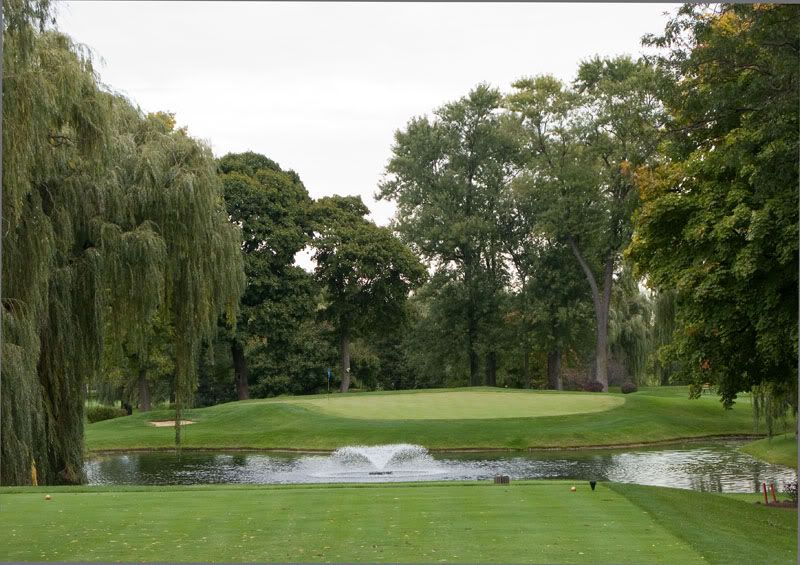
# 13 The Alps 550/520/540/521
This hole once featured a what was called "MCC" Mountain 50 yards from the tee which gave the hole its name and can be seen in the old aerial. The mountain is now lost to time, however the remainder of the hole follows Tweedie's original corridor now lined with trees. The final twist of the fairway is protected by trees which require one to play well right for the proper approach to the green.

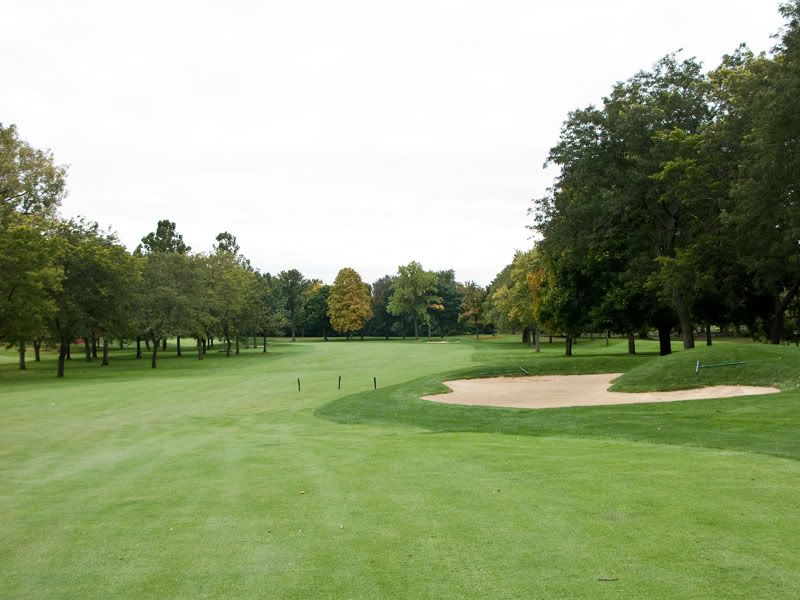
# 14 Easy Street 475/300/312/316 New short par 4 Hole by 1914 by splitting original 475 yard hole
Tweedie's original 475 yarder was modified at some point prior to the 1914 and divided into a short par 4 and a par 3. A pair of retention ponds added up the right hand side present a slight cape like strategy to the hole by challenging those tempted to go for distance over placement.
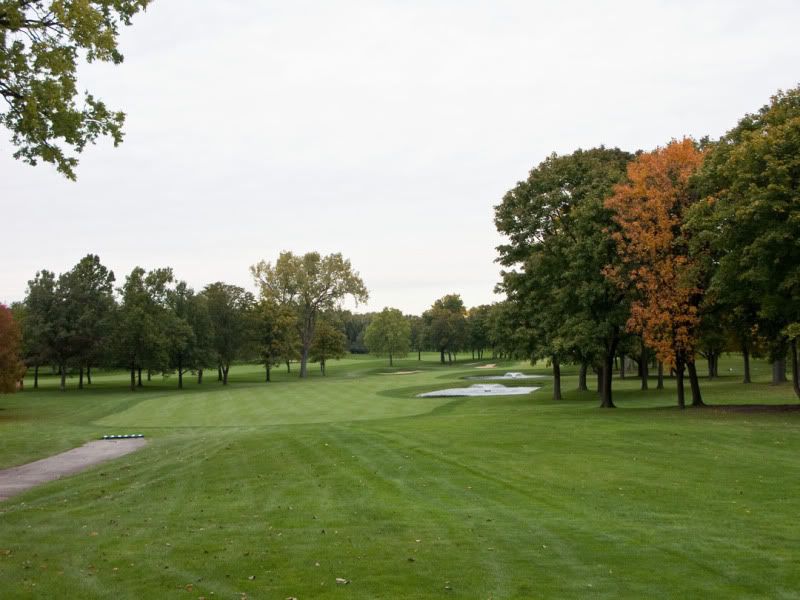
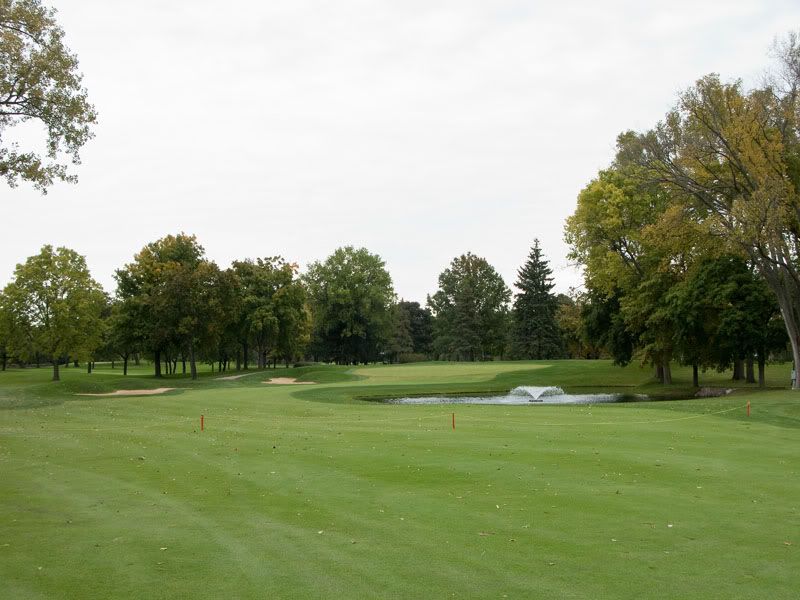

# 15 Paresis xxx/158/180/179
This "new" par 3 was added pre-1914 in the vicinity of the original 14th green. Known as the easiest of Midlothian's par 3's the green is very challenging with three very effective bunkers.

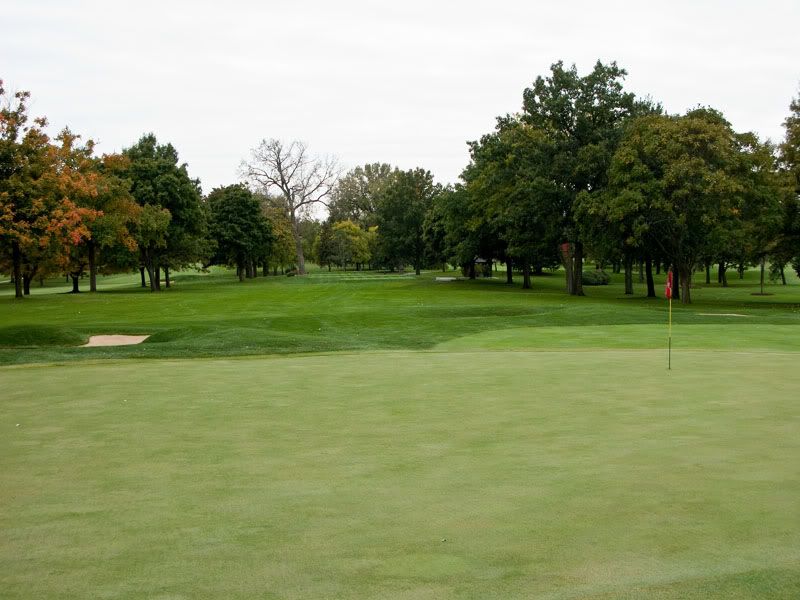
# 16 The Moat 463/490/530/518 (was the 15th in 1901)
This is the long hole that was originally named Paresis which is based on the Greek word for let go. Here Tweedie made good use of a rise in the fairway that comes into play on the third shot. A large, sectionalized modern green finishes off the hole.
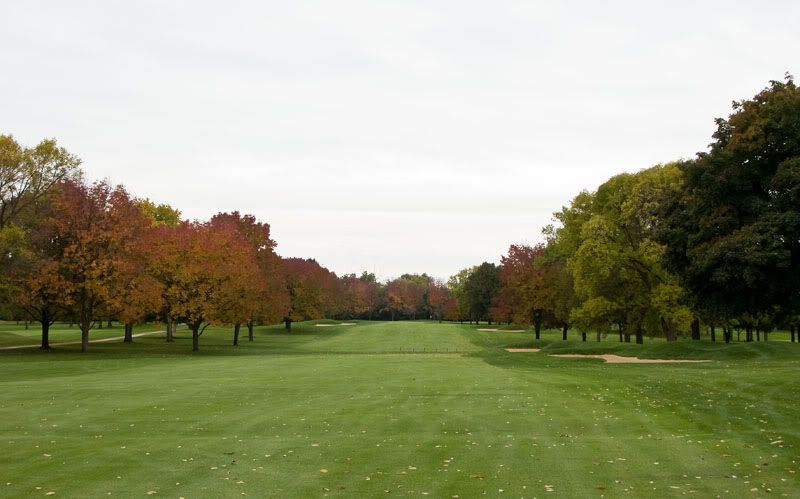
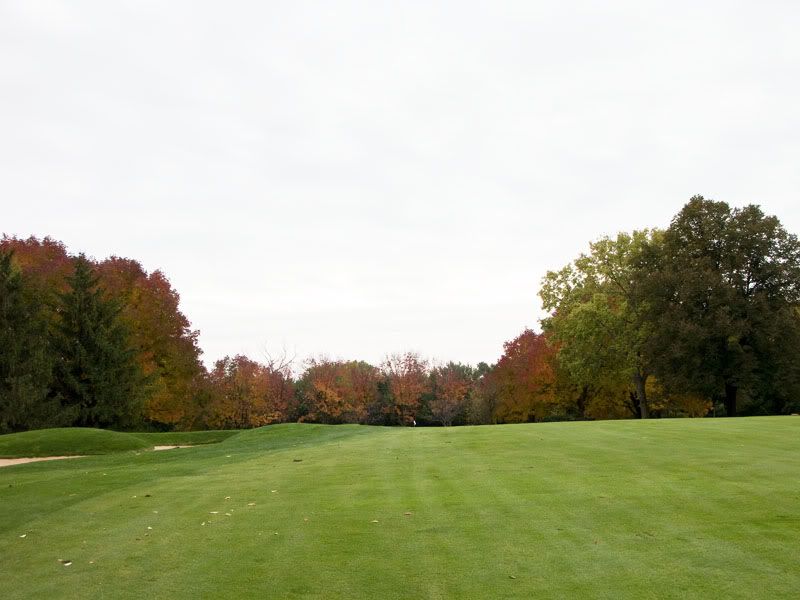
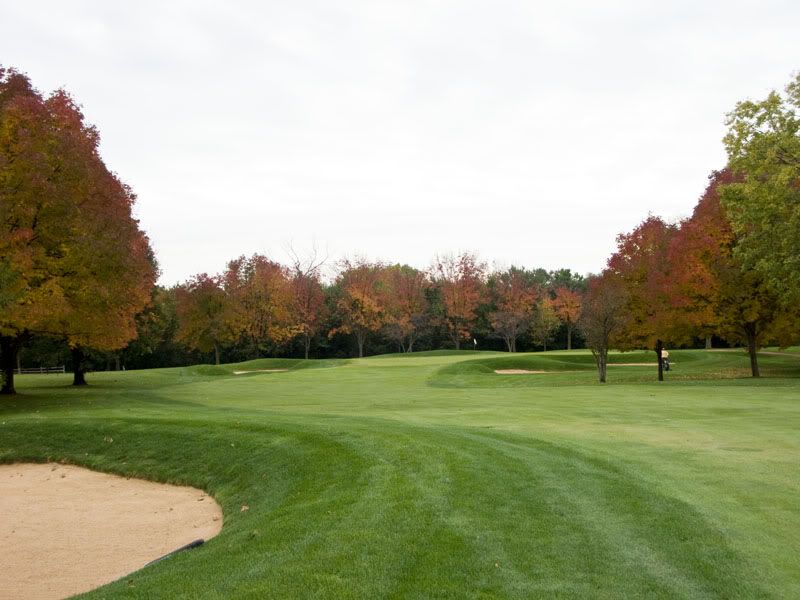
#17 The Teaser 158/400/424/427 (former 310 yard 126th and 158 yard 17th combined into new par 4 pre-1914)
Now a long par four that replaced a short par 4 with a green surrounded by sand (The Moat) and a short par 3, this long par four helps strengthen the finish. Two trees behind the green inexplicably block what would be a wonderful view of the clubhouse as one heads down the home stretch.
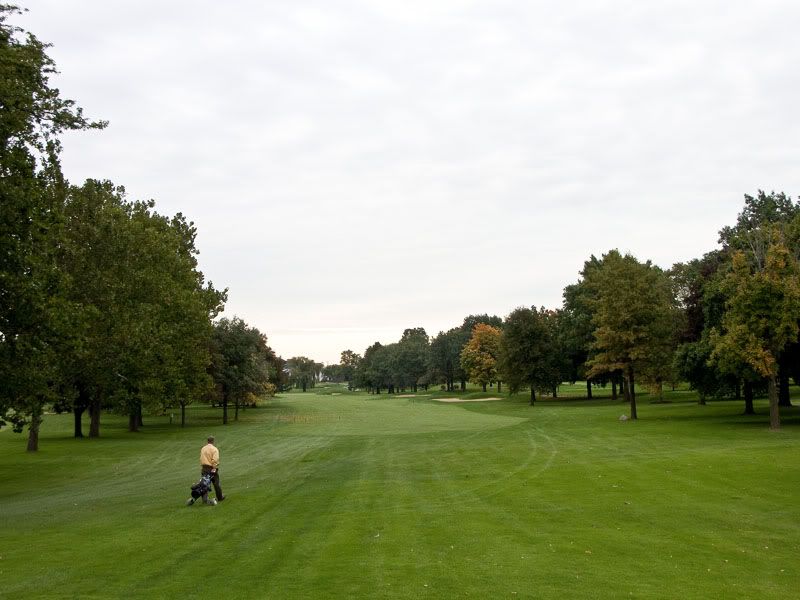
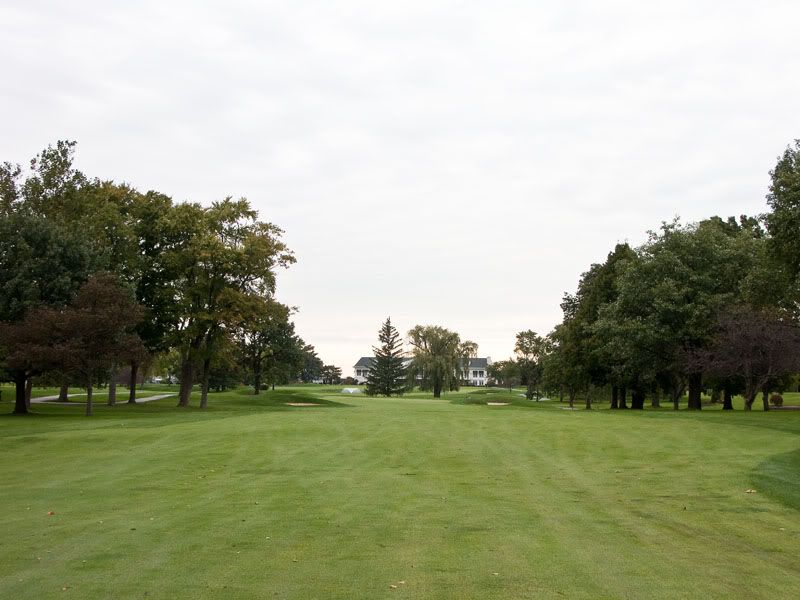
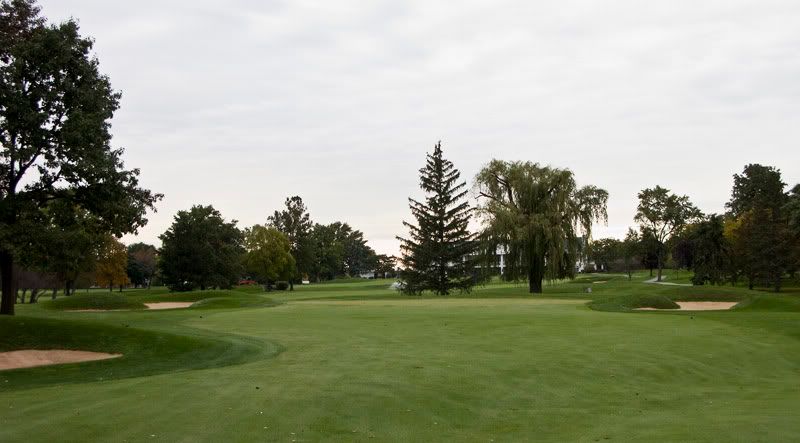
#18 Home 281/277/314/336
The 18th took a beating in 1914 when many players in the dry hot conditions were able to drive the green and winner Walter Hagen made 4 consecutive birdies. On his final hole Chick Evans barely missed a chip-in for birdie in an effort to tie Hagen and force a playoff. At just over 300 yards efforts have been made over the years to stiffen the challenge of the finishing hole. The first retention pond was added in the 1980's and so players simply played out well to the left for an easy pitch home. In the most recent update by Bob Lohman in the early 2000's the 2nd pond was added running along the left side of the landing area up to the green putting a risk reward premium on placement of the drive and adding challenge to the approach. The green is steeply sloped back to front. While Tweedie, Hagen, Evans and Ouimet might have a hard time recognizing the hole, a weak finish has been toughened up a bit.
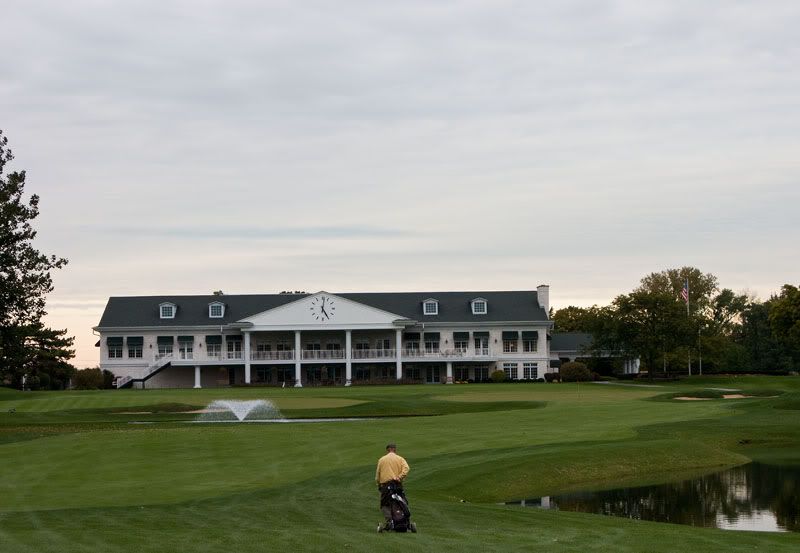
Hagen approaching the 18th green in 1939
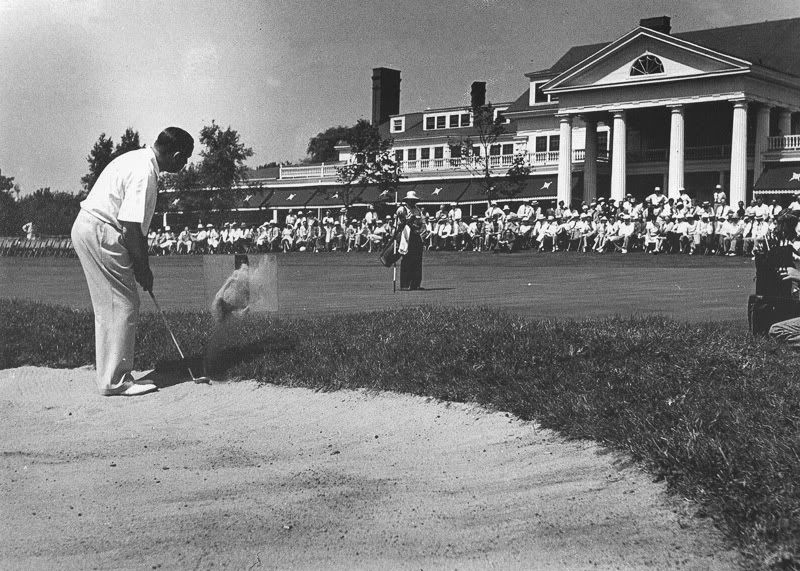
Midlothian Clubhouse and 1st tee in 1901
